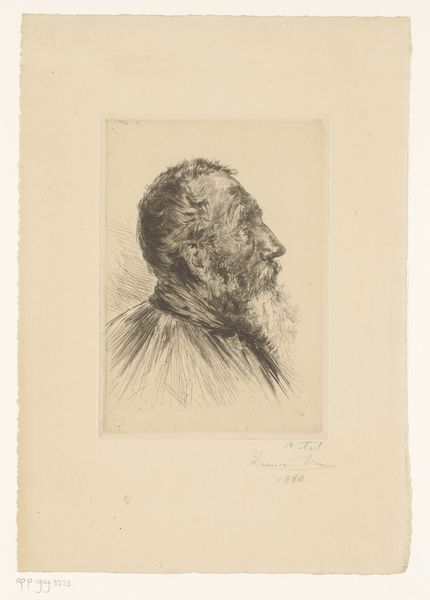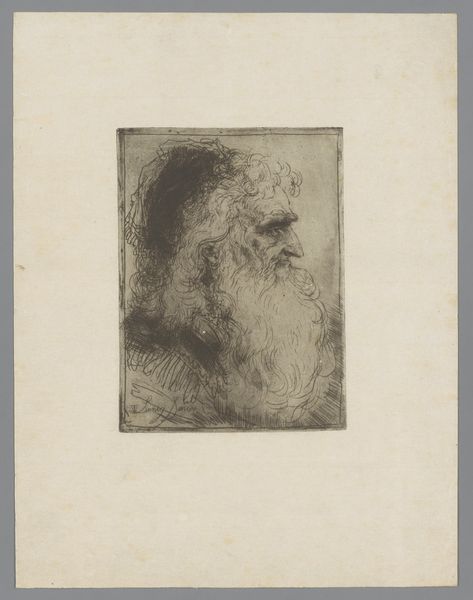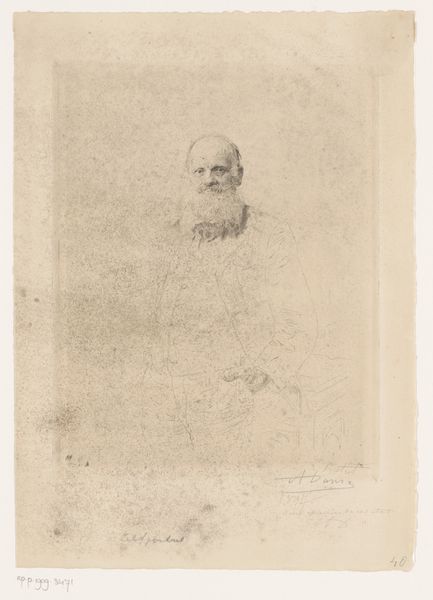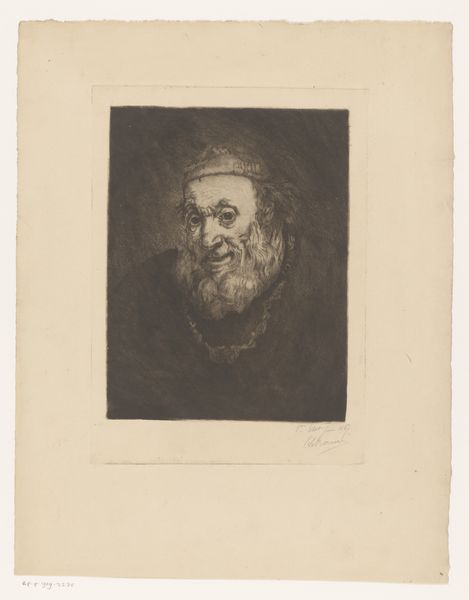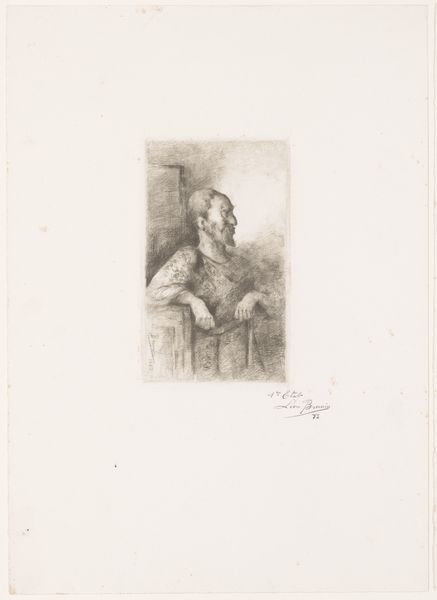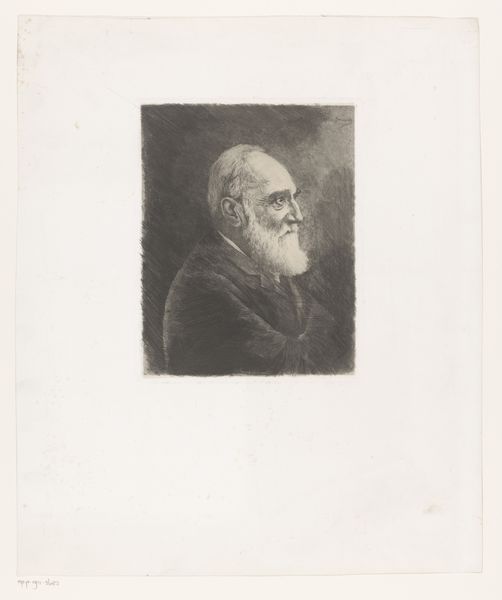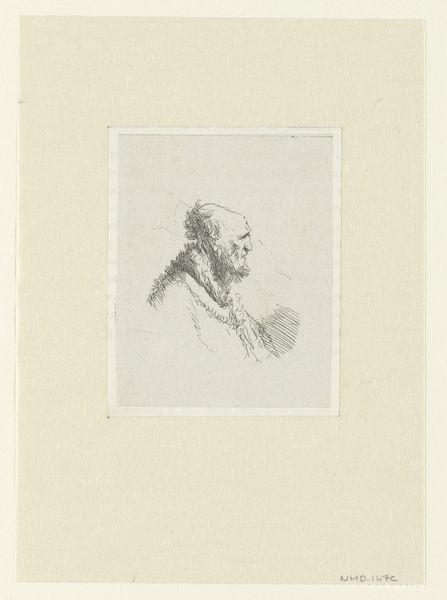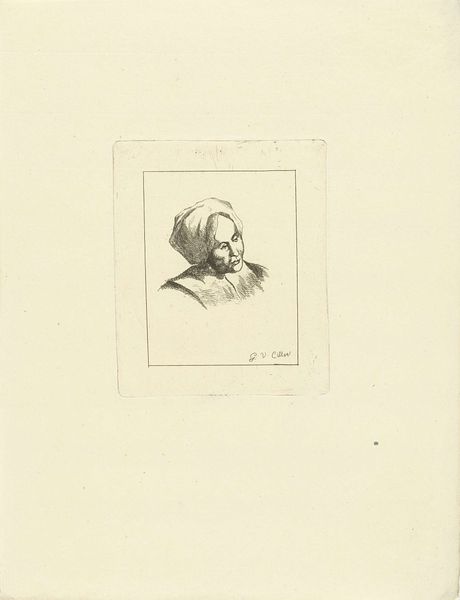
Dimensions: height 195 mm, width 130 mm
Copyright: Rijks Museum: Open Domain
Editor: This is Jan Veth’s portrait of Jozef Israëls, likely from around 1895. It's a pencil drawing or print... there's something very delicate and fleeting about the lines. What strikes you when you look at it? Curator: Well, first I see the labor involved. Think about the repetitive, almost meditative act of hatching with a pencil to build up those shadows. This wasn’t a quick sketch; it's a considered, crafted image. Then consider the materiality of the pencil itself – graphite mined and processed, then applied to paper, likely produced through its own complex industrial process. How do these mundane materials elevate a simple portrait to art? Editor: I hadn’t thought about it like that, more just the impression of likeness... I suppose it's interesting that they chose pencil instead of paint for this portrait. What statement does that make? Curator: It signals something about the artist's intentions and perhaps Israëls' social standing too. Pencil drawings were often seen as studies or preparatory works, inherently "lesser" than painting. By elevating pencil drawing to portraiture, Veth challenges this hierarchy, democratizing the artistic process, and by extension, suggesting that Israëls' artistry is rooted in that same materiality. Editor: So you're saying the choice of a “common” medium elevates Israëls rather than diminishes him? Curator: Exactly! It celebrates his labor, his contribution to the world through his craft. It is worth wondering, though, whether the means of production had any part in its original reception, given that the choice was not so arbitrary when the work was first produced. Editor: That’s a perspective I hadn't considered! Seeing the "art" in the materials and process adds a whole new layer of meaning. Curator: Indeed. Materiality brings a deeper understanding and appreciation.
Comments
No comments
Be the first to comment and join the conversation on the ultimate creative platform.
